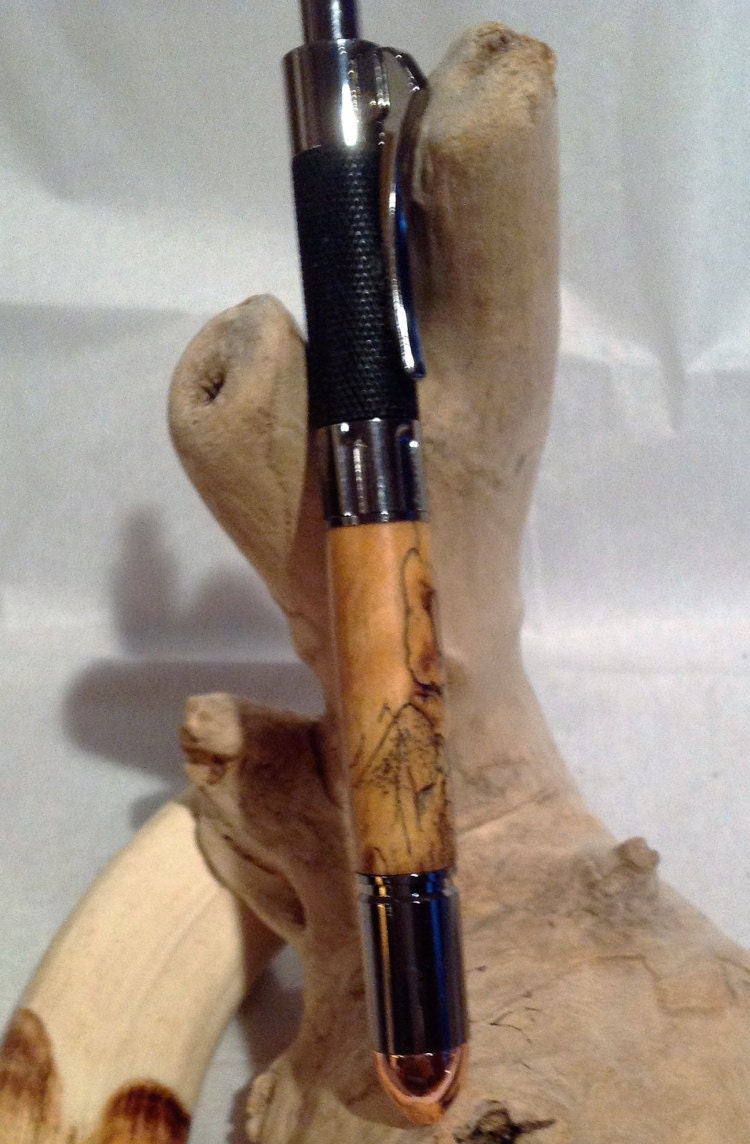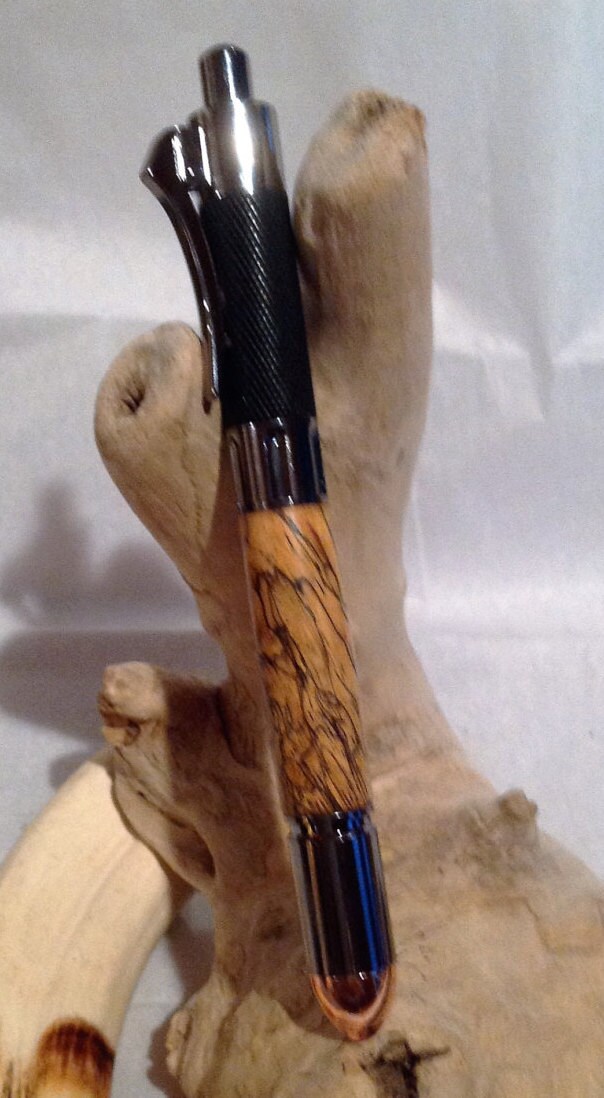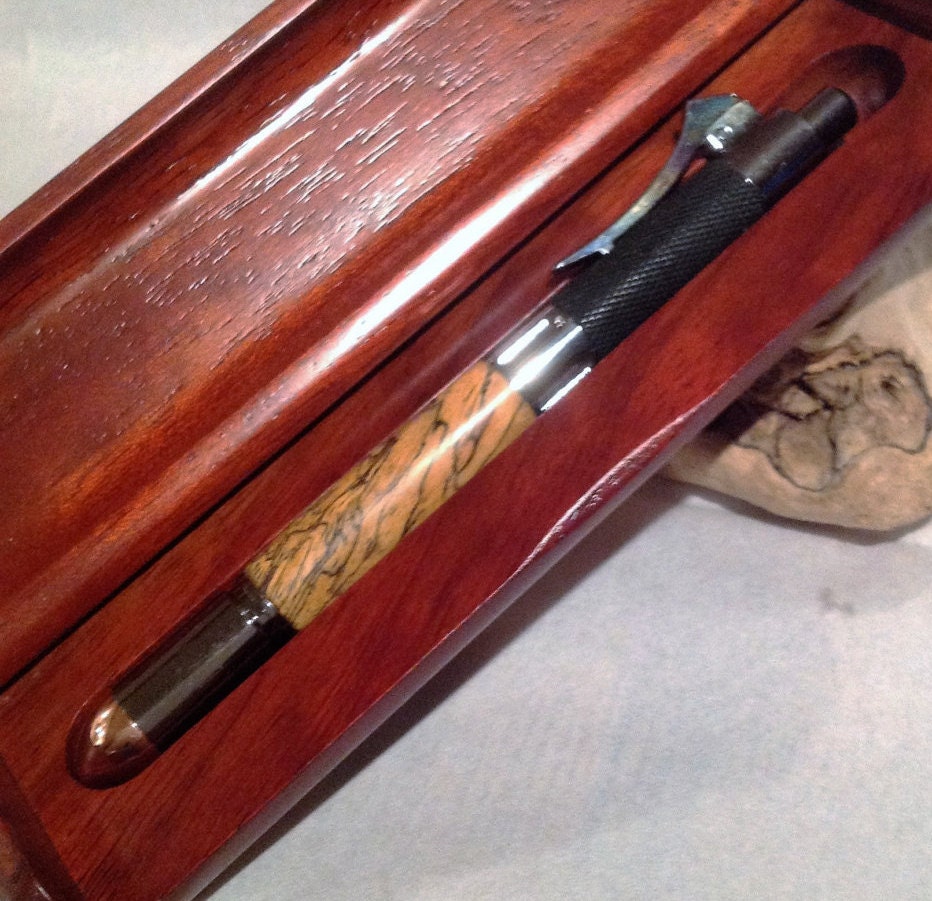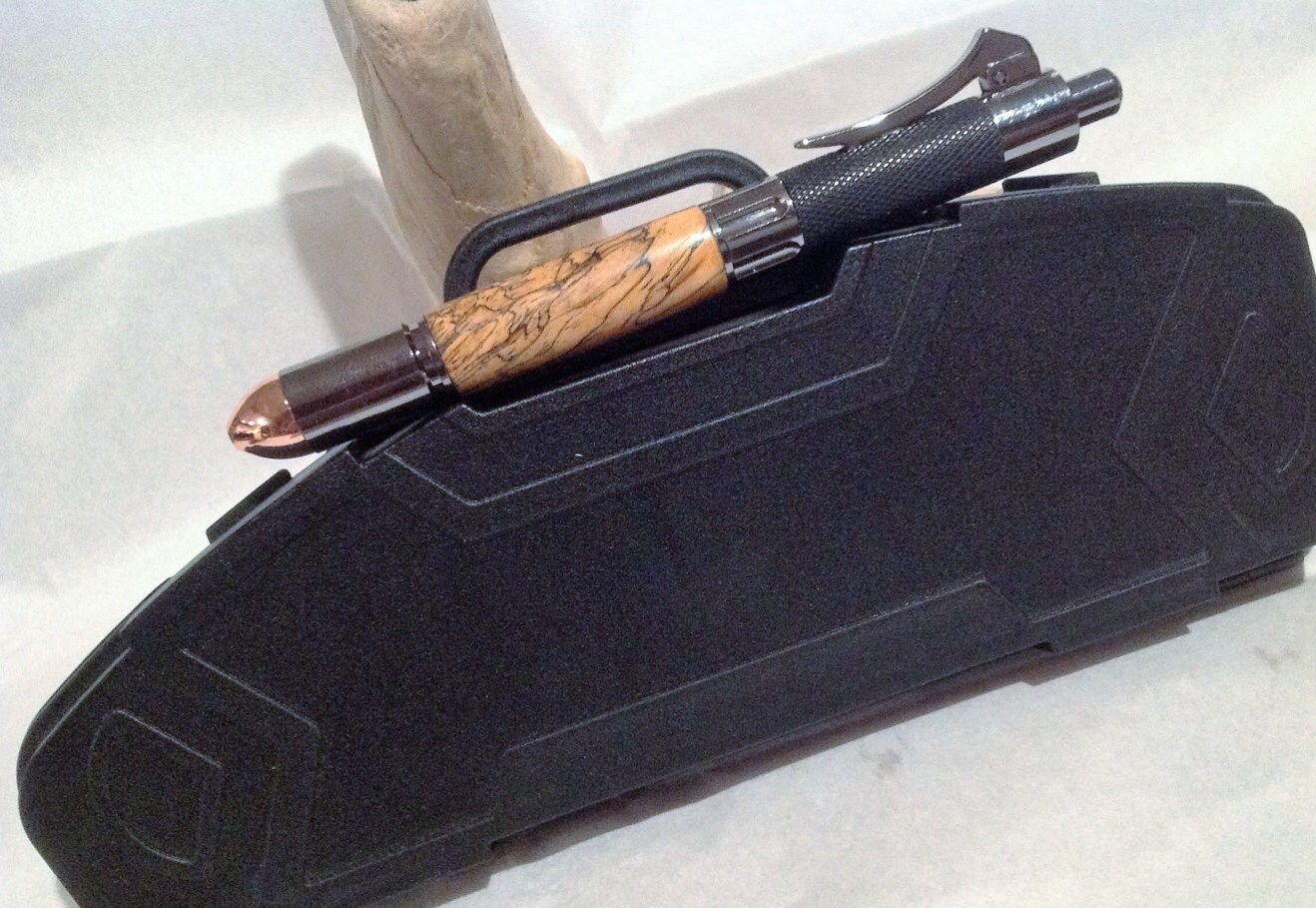Trigger Revolver Stlye Custom Pen w/ Spalted Tamarind Wood Barrel, Gun Metal Trim Copper Bullet Tip (#2353)
$55.00
This is a hefty pen great for office use and makes a great impression for your desk. This is a new style to the gun pen market, very unique, click the top button to extend the pen point and watch the barrel band rotate, then press the clip tlike a gun trigger to retract the pen point. This pen comes in a Rosewood or a Mini Plastic Gun Case gift box. I can make this pen with a variety of exotic woods and even deer or elk antlers on quest.
Spalted Tamarind
LATIN: TAMARINDUS INDICA ORIGIN: TROPICS WORLDWIDE
Spalted Tamarind is a beautiful exotic wood often found laying on the forest floor. The rotting effect on Tamarind creates the spalted look that varies from piece to piece.
Spalting in hardwoods is divided into three main types: pigmentation, white rot and zone lines. Spalted wood may exhibit one or all of these types in varying degrees. Softwoods are susceptible to brown rot which degrades the wood too quickly to be used for woodworking.
Pigmentation: Also known as sapstain, or in its most common form, bluestain, this type of spalting occurs when the darkly-pigmented fungal hyphae grow in the sapwood parenchyma of a tree. A visible color change can be seen if enough hyphae are concentrated in an area. These pigmentation fungi often colonize wood via the rays, but are not considered decay fungi due to their non-destructive use of easily available wood carbohydrates. The most common groups of pigmentation fungi are the imperfect fungi and the Ascomycetes. Mold fungi, such as Trichoderma spp., are not considered to be spalting fungi, as their hyphae do not colonize the wood internally.
While pigmentation fungi do not degrade the wood cell wall, this type of decay can lead to a reduction in toughness (amount of energy absorbed before breaking), and increased permeability. Pigmentation can occur on both hardwood and softwood, unlike other types of spalting which are more host specific.





